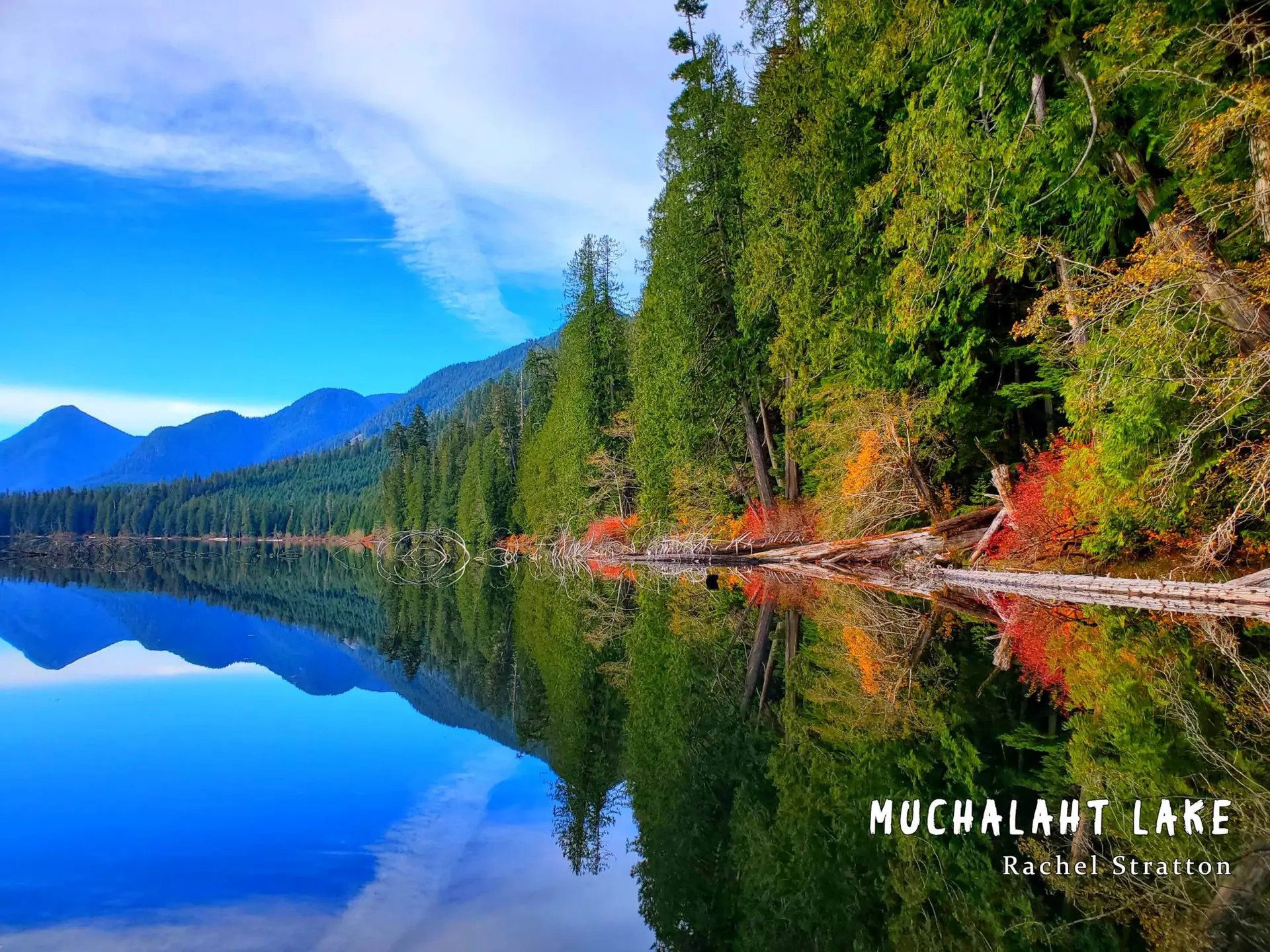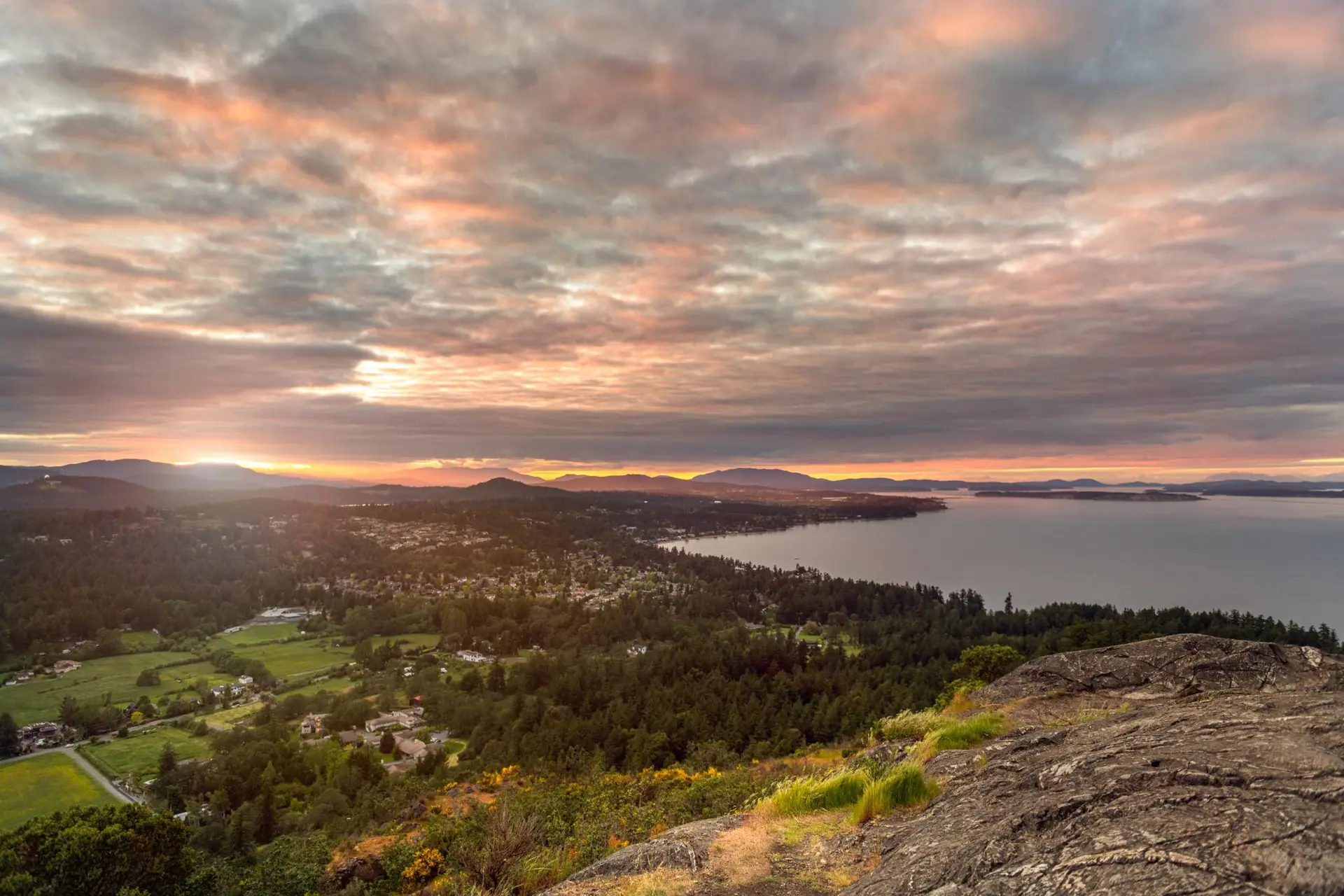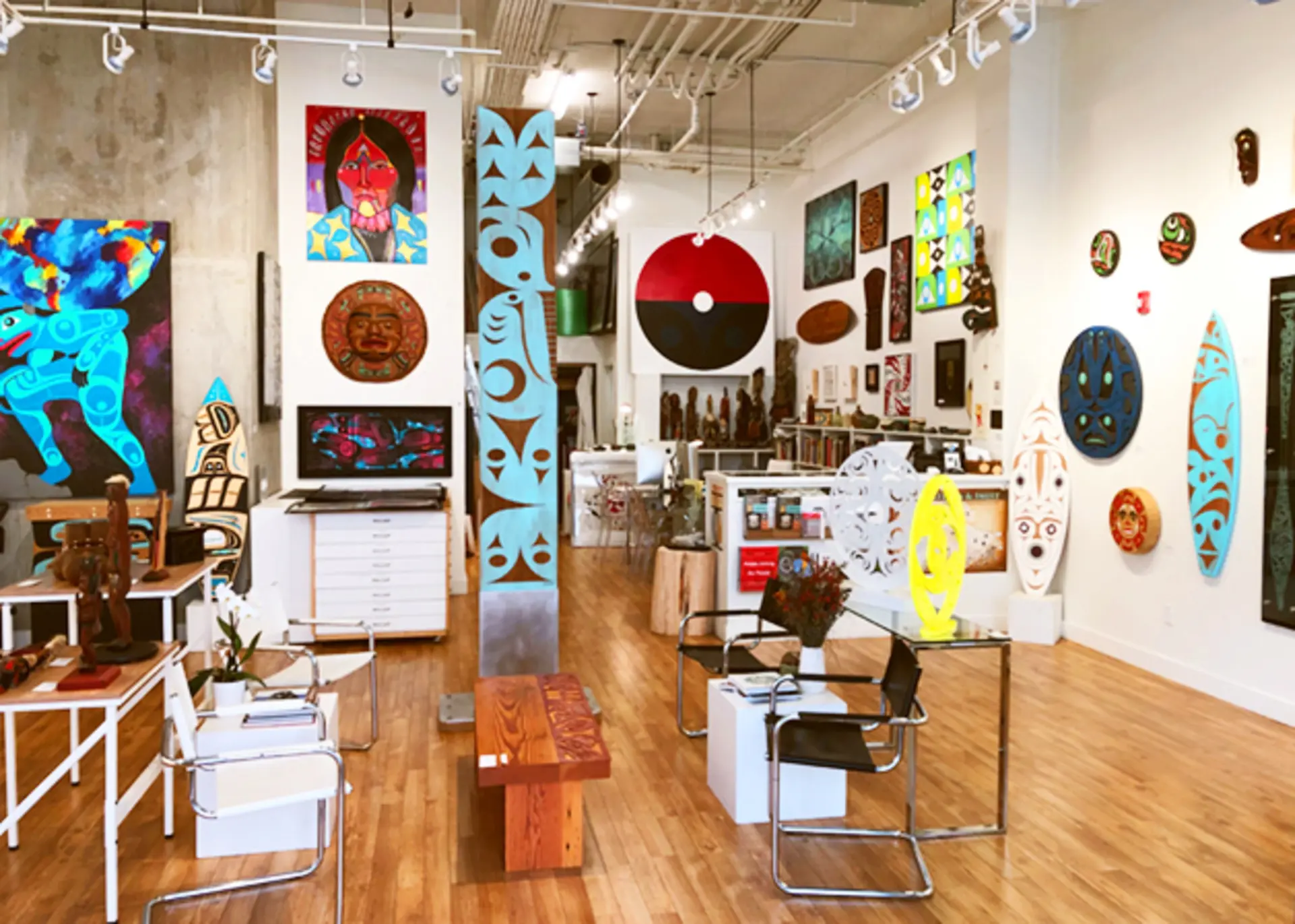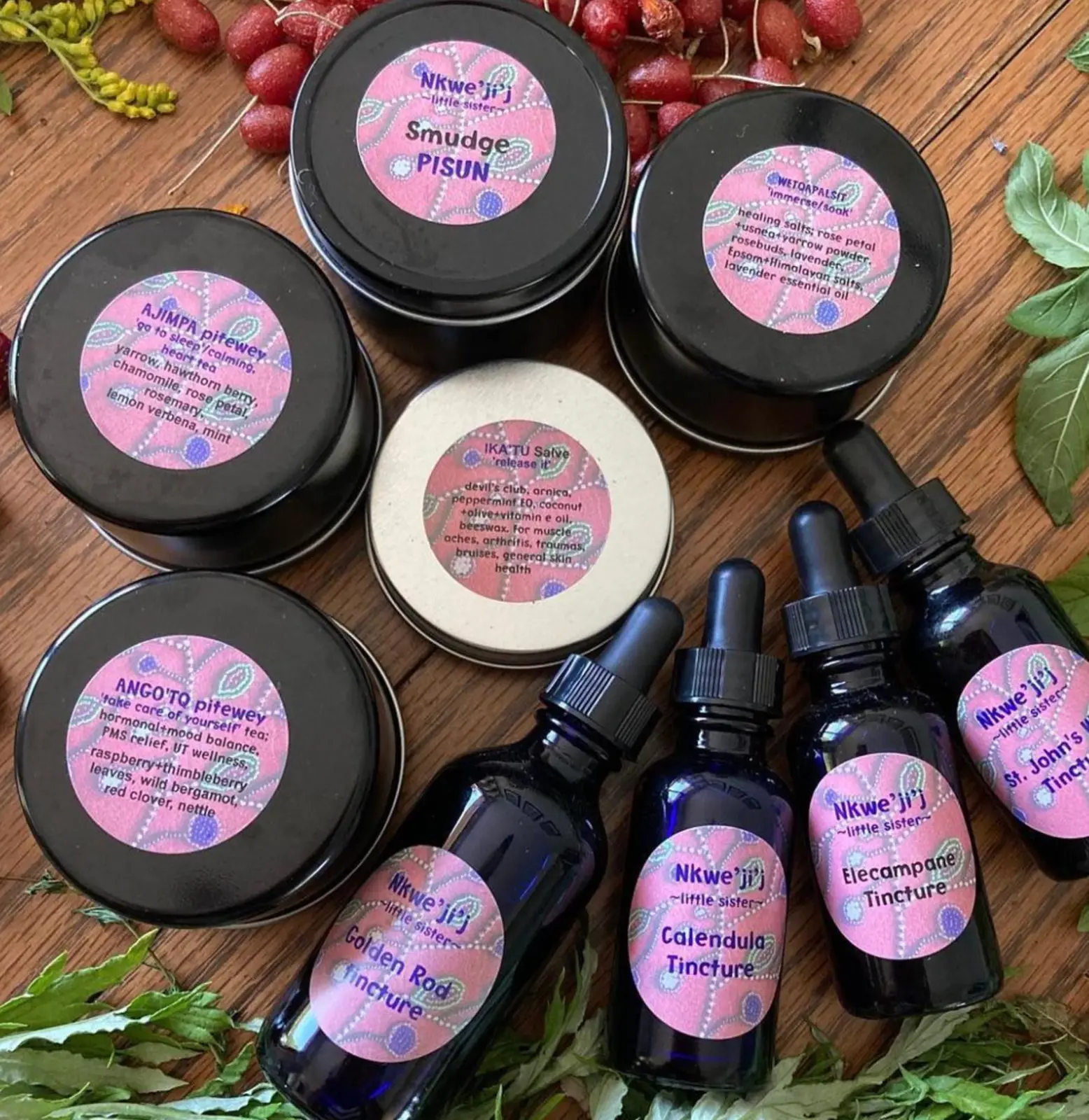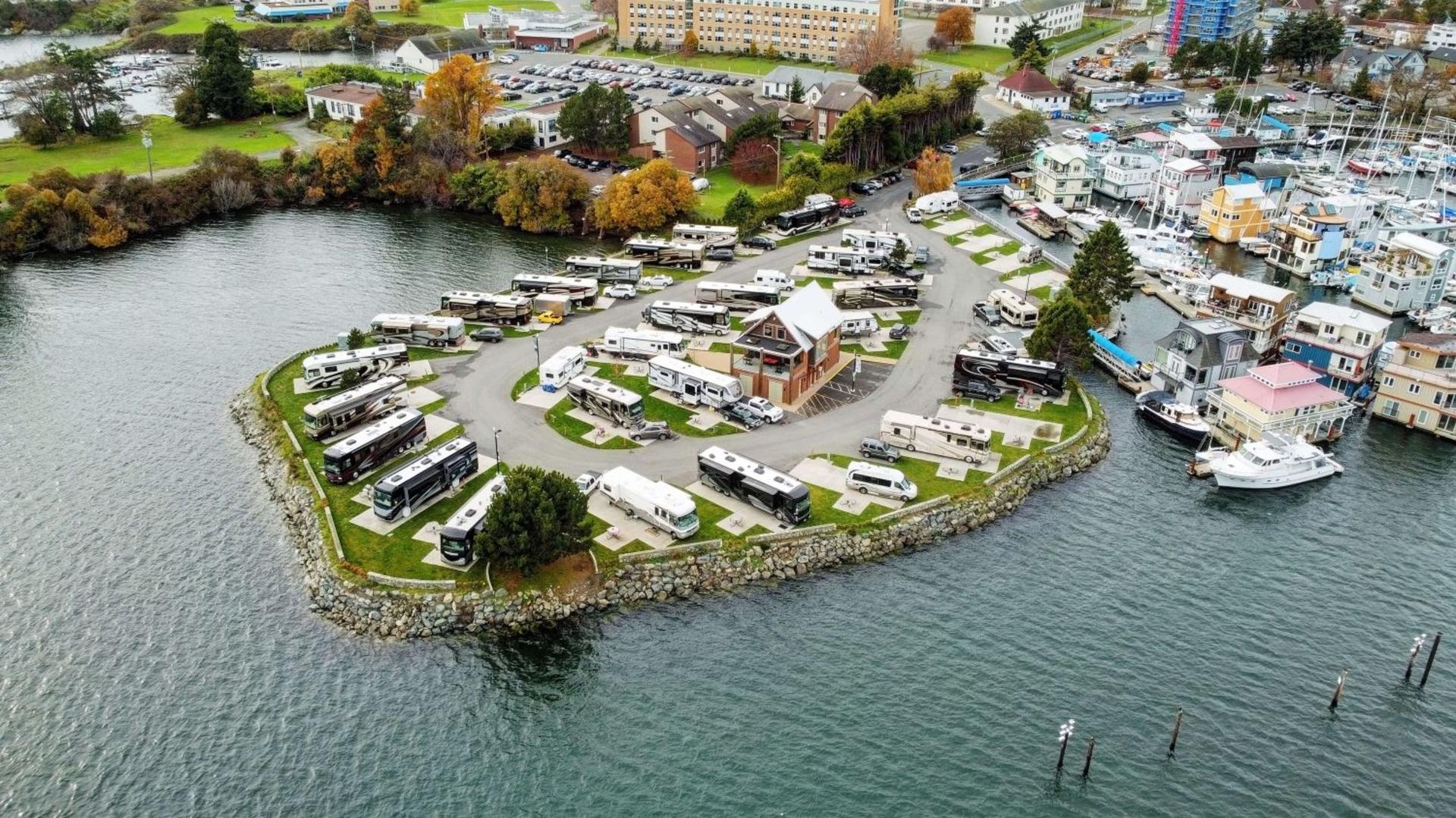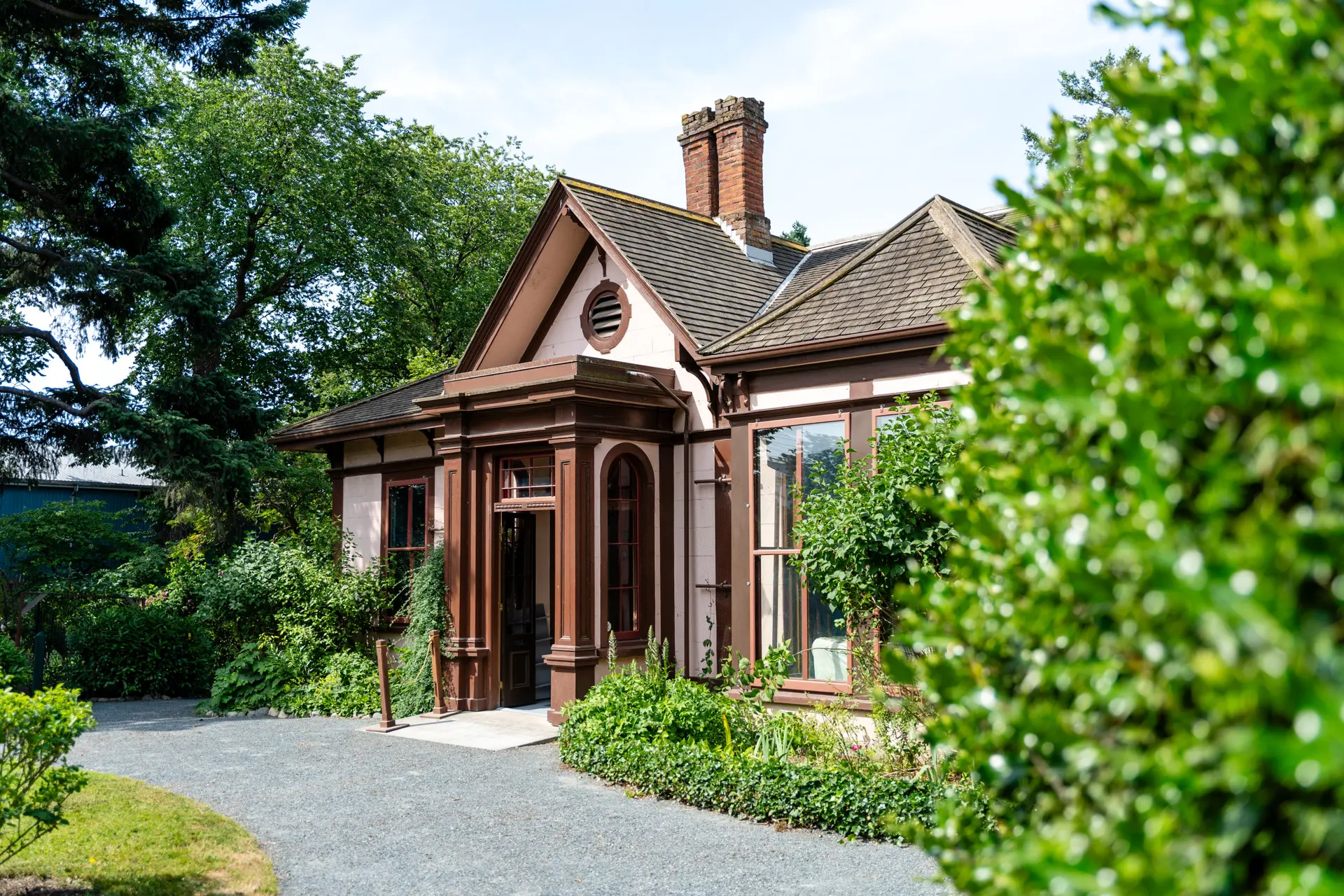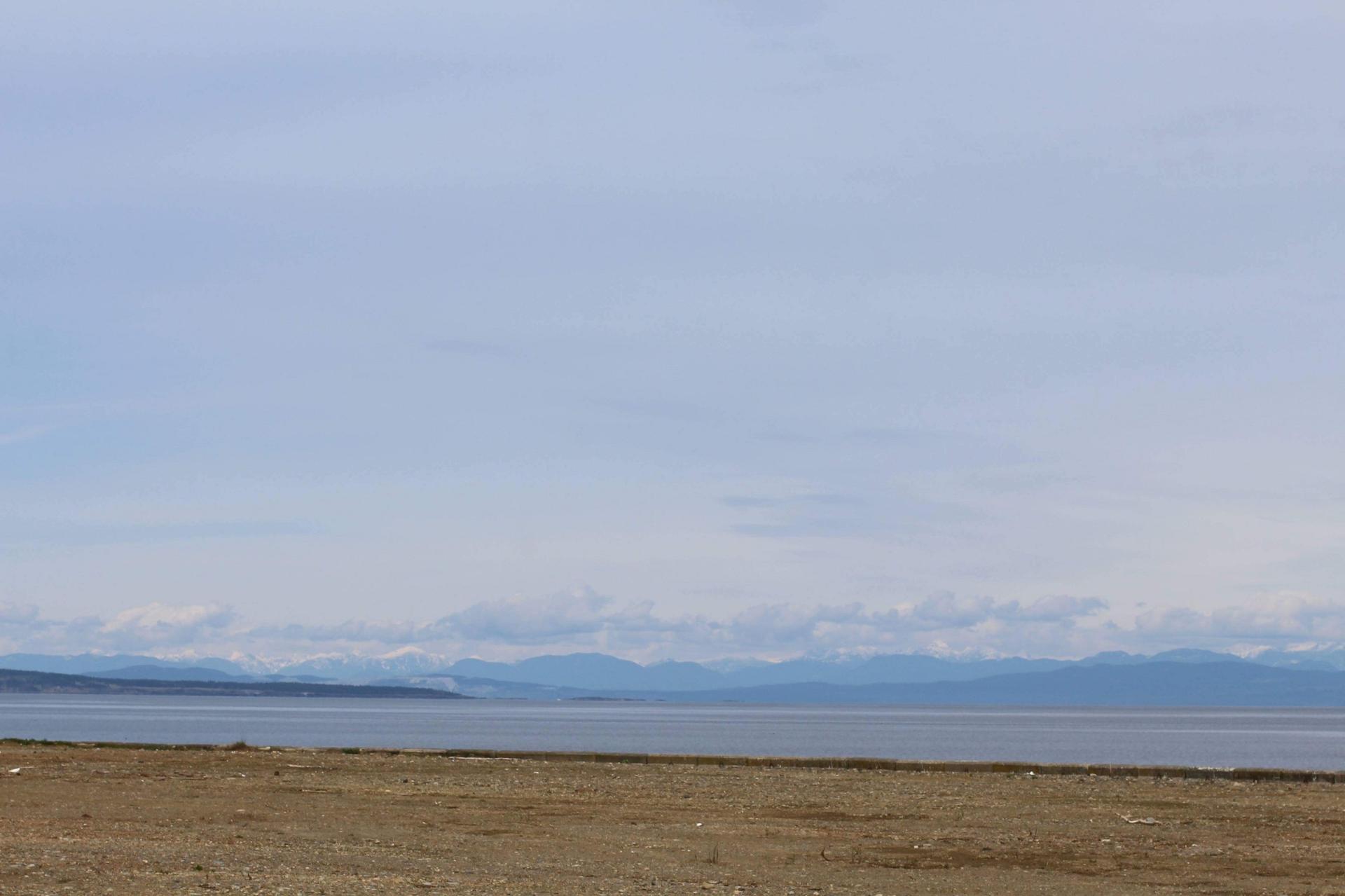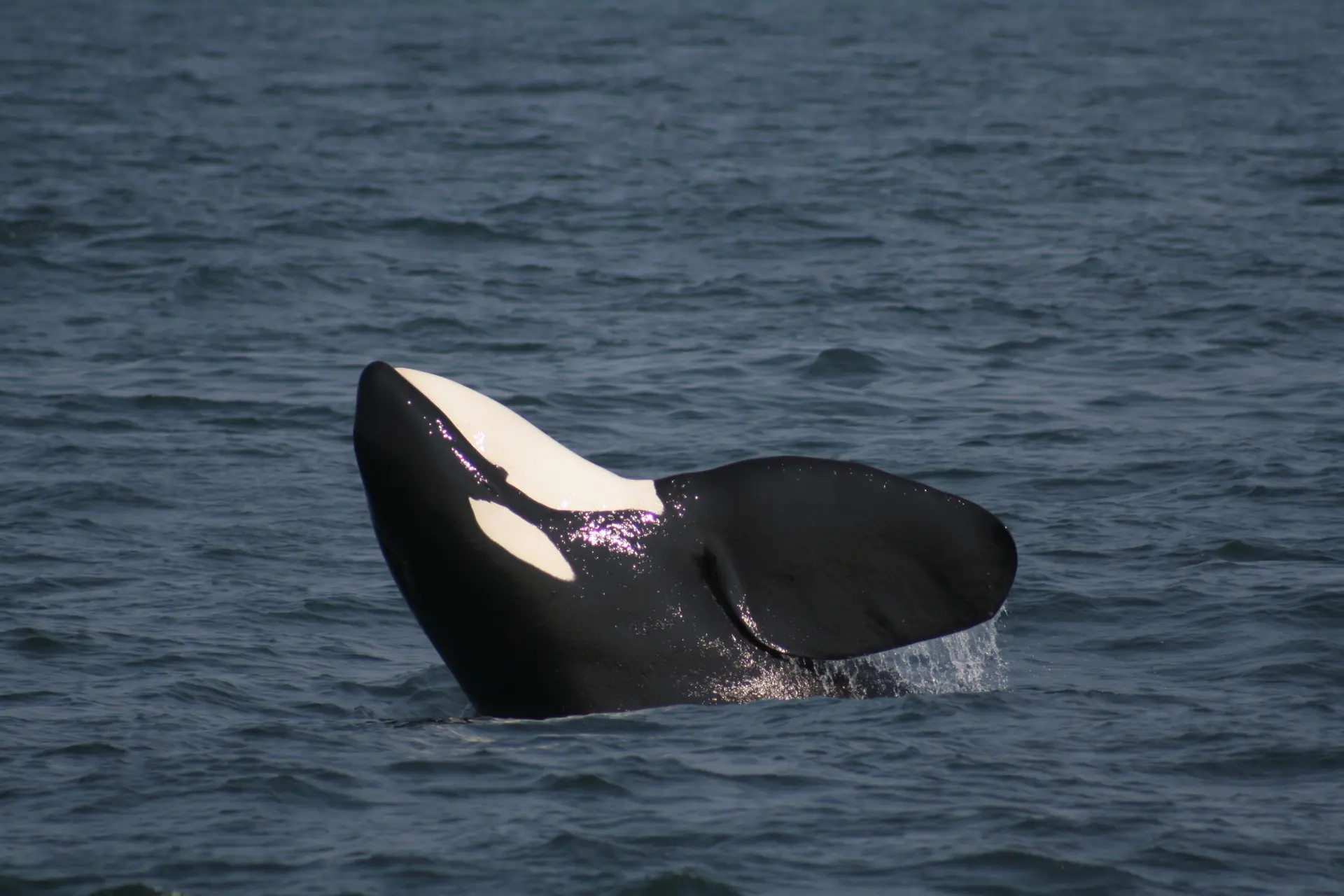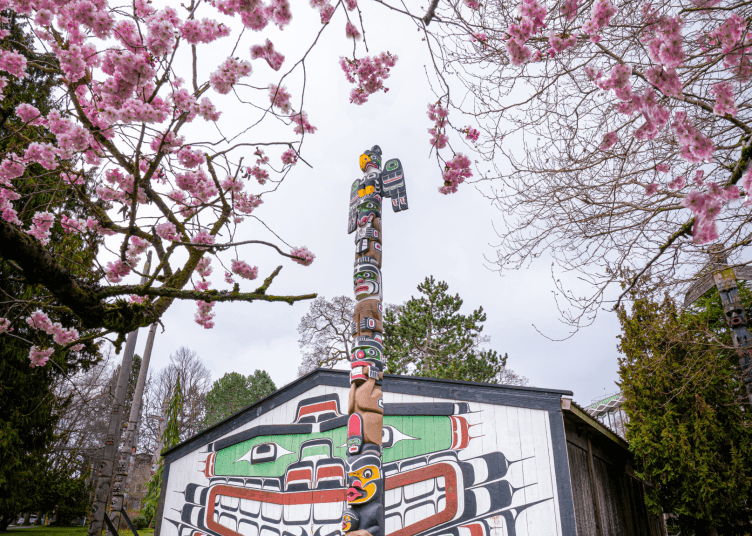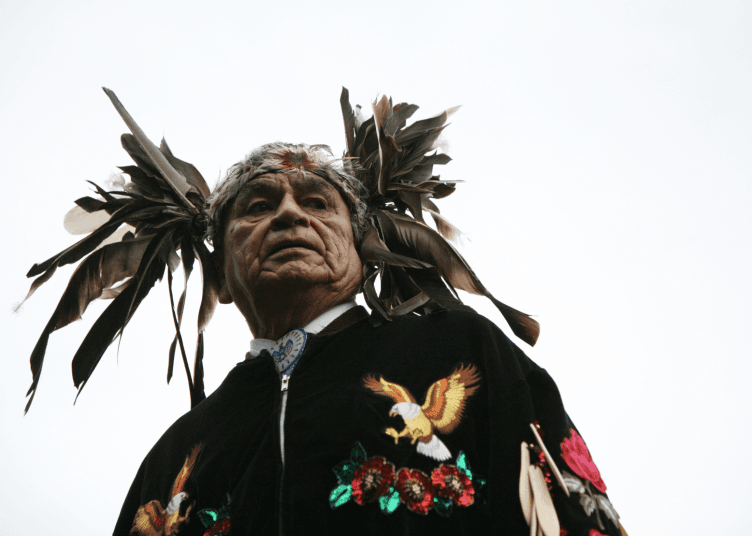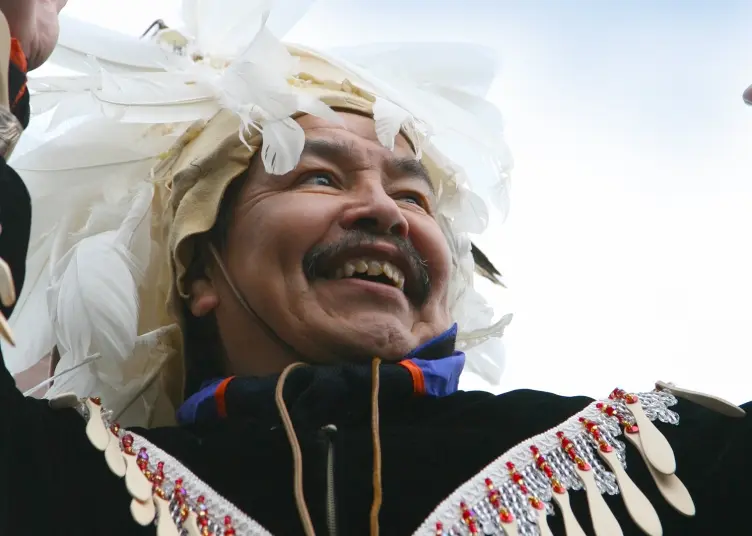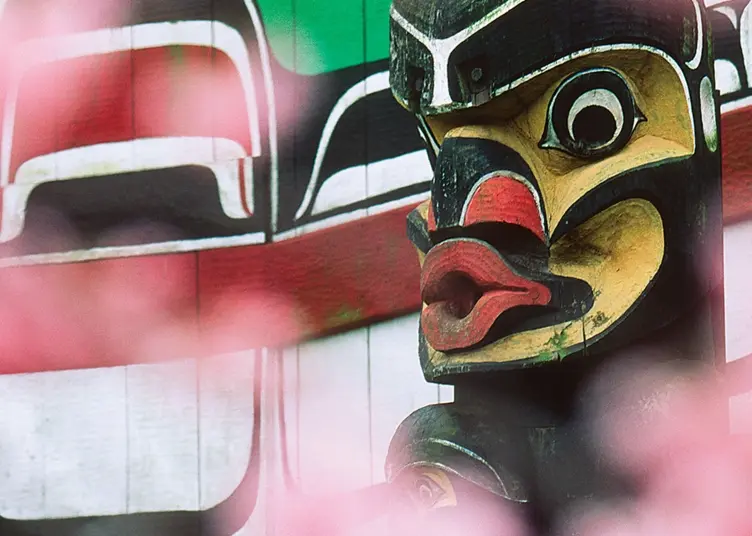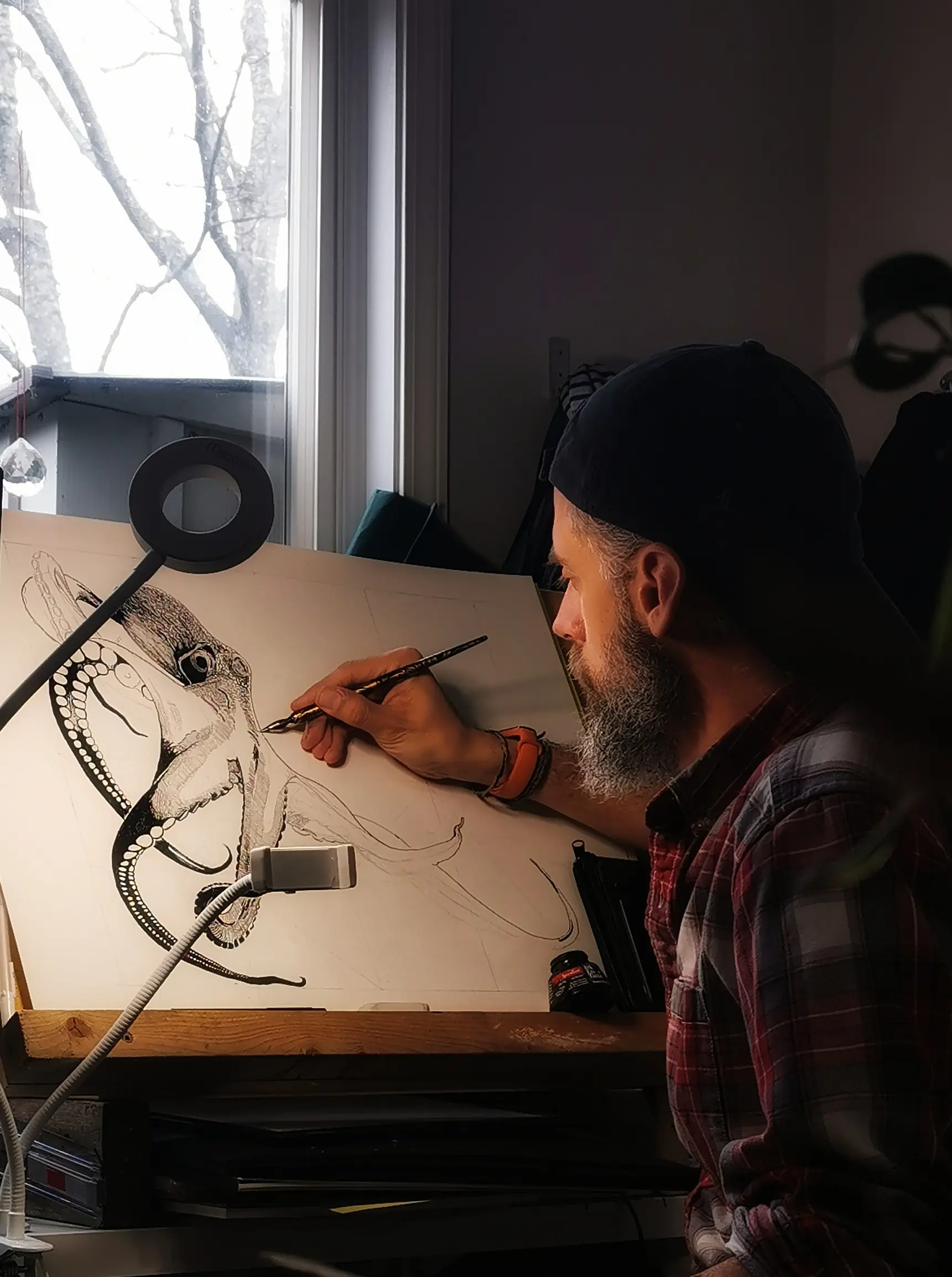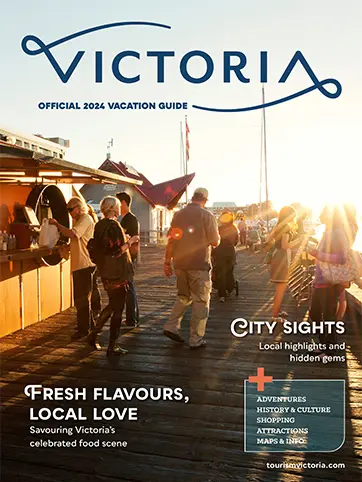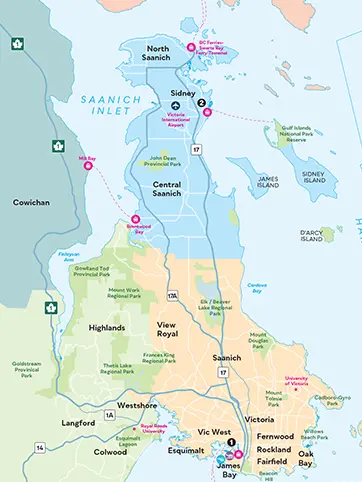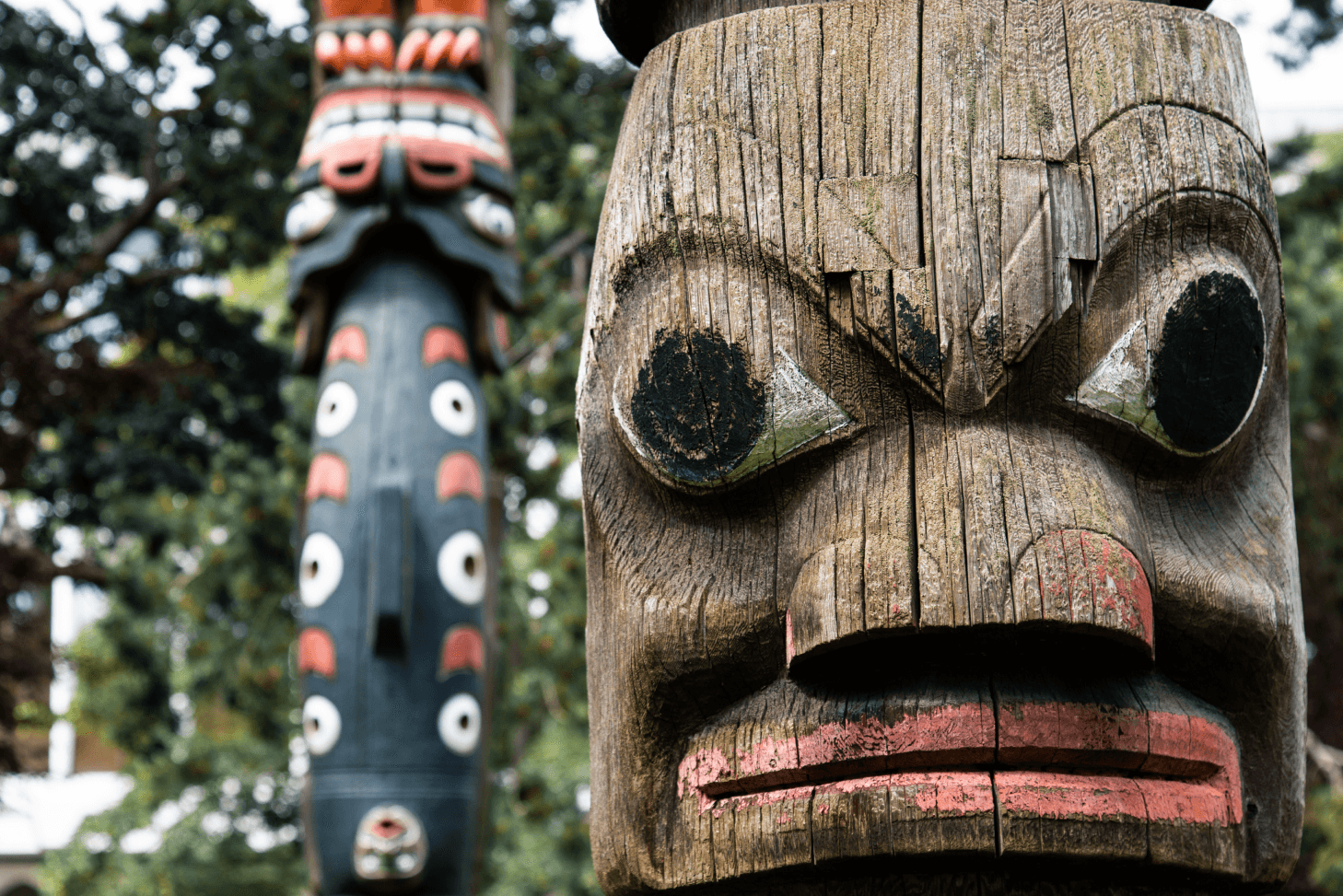
Indigenous Culture
Land Acknowledgement
Destination Greater Victoria is honoured to be based on the traditional territory of the Lekwungen-speaking peoples of the Songhees Nation and Xwsepsum Nation, and W̱SÁNEĆ peoples, whose historical relationships with the land continue to this day.

Traditional Territory
lək̓ʷəŋən traditional territory is the home of modern day Victoria and Esquimalt. As you weave your way through Victoria's historic streets, keep your eyes peeled for the Seven Signs of the lək̓ʷəŋən, which represent culturally significant sites of the Songhees and Esquimalt Nations. These bronze casts of original cedar carvings, carved by Master Carver Bruce Dick and his son Clarence Dick, stand 2.5m tall and represent the spindle whorls used by Coast Salish women to spin wool. These sites have played an important role in lək̓ʷəŋən culture where lək̓ʷəŋən People's have hunted, gathered, fished, traded, loved, laughed, and played for thousands of years.
lək̓ʷəŋən People's storySupport Indigenous Businesses
The vibrant and ongoing heritage and legacies of Indigenous Peoples live on in Greater Victoria and Vancouver Island through ceremonies, potlatches, dances, art and masks. An Indigenous experience is an enriching and engaging addition to any Greater Victoria visit.

History
The Songhees, Xwsepsum, WSANEC, Tsartlip, Tseycum, Pauquachin, Scia'new, Tsawout and T'Sou-ke Nations all have long called Southeastern Vancouver Island home.
Prior to European arrival in the late 18th Century, a Songees fortified village existed at Finlayson Point in Beacon Hill Park. After the establishment of Fort Victoria in 1854, the village was forcibly moved across the harbour into what is now Victoria West. Currently the Songhees and Esquimalt Nations reserves lie at the Southwestern edge of Victoria, bordering each other and the Town of View Royal. With their traditional lands lying northwest of Victoria, reserves of the T'Souke and Scia'new Nations lie along the Sooke Basin while the Tseycum, Tsartlip, Tsawout and Pauquachin Nations are located east of Victoria along the Saanich Peninsula.

Bringing the lək̓ʷəŋən Language Back to Life
The lək̓ʷəŋən speaking People's have been working to reawaken their language since 2018. The Songhees Wellness centre works diligently with the local Indigenous Community to preserve and grow the use of the lək̓ʷəŋən language. Language classes are often paired with Knowledge Keepers who share wisdom and traditional skills to students. Students learn a unique version of the International Phonetic Alphabet, known as the lək̓ʷəŋən Phonetic Alphabet, which has now been developed for typing lək̓ʷəŋən on digital devices.
həlitxʷ tθə lək̓ʷəŋiʔnəŋ
Seven Signs of the lək̓ʷəŋən
Take a self-guided journey, 10,000 years in the making, through the traditional lands of the lək̓ʷəŋən Speaking People. While the emergence of modern day Victoria makes it difficult to experience the land as it was pre-European contact, the Seven Signs of the lək̓ʷəŋən represent seven culturally significant sites of the lək̓ʷəŋən people. Each site is marked with an intricate Spindle Whorl carving from Songhees Master Carver and artist, Butch Dick. The signs of the lək̓ʷəŋən are woven throughout the city, with sites located at p'áləc'əs (Songhees Point), South West Bastion of Hudson's Bay Company Fort, skwc'əŋíɫč (Outside City Hall), xws3yq'əm(Lower Causeway), míqen (the "Lookout" at Beacon Hill Park), q'emásəŋ (Royal BC Museum), and Laurel Point.
lək̓ʷəŋən Traditional Territory
lək̓ʷəŋən Traditional Dancers
The talented lək̓ʷəŋən Traditional Dancers Masks bring the vibrant lək̓ʷəŋən culture to life through dance. You can find the lək̓ʷəŋən Traditional Dancers at significant events around the region. The 25 strong group ranges in age from 8 to 79 years old and have performed for Indigenous Groups from around the world, Queen Elizabeth II, the Lieutenant Governor, the Prime Minister, and many more.
lək̓ʷəŋən Traditional Dancers
Masks
Indigenous masks depict different symbols used in the stories of a Nation. The masks carved for a Nation are used for ceremonial purposes. The most common symbols on masks and totems are the Thunderbird, killer whale, frog, salmon, beaver, bear, wolf, raven, sun and moon.
Indigenous Culture in Greater Victoria
Nahnum
The nahnum (fire circle) is a gathering place where stories and teachings are shared. The circular seating and fire are traditions that started in Nations’ winter homes, where members of all generations would sit and talk with elders. More formal gatherings are held to discuss business matters. During those meetings, a talking stick is used to indicate which person will speak. Gatherings are still practiced today, although they may not be around a fire.
Potlach
The potlach is a sacred ceremony and the societal underpinning of Indigenous culture. Through this ceremony, Indigenous Peoples unite families in marriage, name children, right wrongs, pass on rights and responsibilities to the next generation and share wealth. From 1884 to 1951, the potlach was outlawed by the Canadian government as part of an attempt to destroy Indigenous culture and force the assimilation of its people. Masks and regalia were confiscated, and priceless historical treasures were destroyed. Only in recent years have the traditions come to life once again, through the memories of elders and the efforts of present-day Indigenous Peoples.
Powwow
A powwow is a celebration of Indigenous culture that features traditional dance, music, food and regalia. As both ceremonial and social events, powwows hold a spiritual significance and continue customs passed through generations. Today, Powwows are often public gatherings that welcome people from all communities as a way to celebrate and share cultural traditions.
Storytelling
Indigenous culture is based on oral history and elders are responsible for sharing the rich stories of the ancestors. Elders are the Knowledge Keepers, an important role for a culture that traditionally had no written history. Indigenous Peoples are keenly aware that, as times change, they could lose stories about their history. Now, with permission, storytelling gatherings are recorded for archival purposes.
